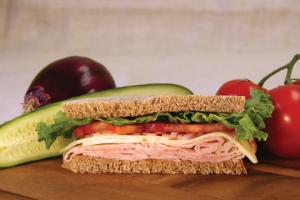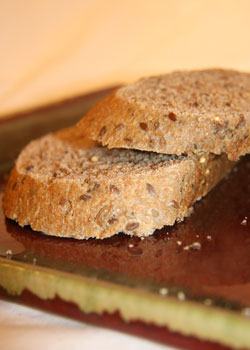Eating for Happiness
Around this time of year the mercury in your thermometers starts to rise to a tolerable level, the sun starts to shine, and you just can’t help but crack a smile and have a hop to your step. But for those of you (like us here in Montana) whose winters stretch longer than you’d hope for depriving you of mood enhancing weather forecasts, there is still hope to boost your temperament with the power of FOOD. I am not talking about eating a candy bar for instant happiness (although that may do the trick for about 5 minutes). I am talking about eating a healthy diet for lasting improved disposition. Follow the guidelines below to boost your mood:
Carbohydrates
- Just as the Dietary Guidelines for Americans 2010 states, avoid refined grains and replace them with whole grains! This will help to control blood sugars by having a more gradual absorption rate due to the beneficial fiber within whole grains, fruits, and vegetables. This will also maintain energy for longer periods of time. Carbohydrate ingestion is also related to an increase in serotonin, a neurotransmitter related to feelings of happiness which also regulates sleep, pain, and mood. Make 45-65% of your calories carbohydrates and at least half your grains whole.
Protein
- Choose lean proteins and seafood to slow down the a bsorption of carbohydrates and further aid in sustaining energy.
 Protein is also associated to the release of two neuro tr ansmitters related to mood, focus, motivation, and alertness called dopamine and nor-epinephrine. The amino acid, Tryptophan, is found in such proteins as turkey, dairy, red meat, and tuna is specifically related to serotonin synthesis as well. Make 10-35% of your calories lean protein.
Protein is also associated to the release of two neuro tr ansmitters related to mood, focus, motivation, and alertness called dopamine and nor-epinephrine. The amino acid, Tryptophan, is found in such proteins as turkey, dairy, red meat, and tuna is specifically related to serotonin synthesis as well. Make 10-35% of your calories lean protein.
Omega 3 Fatty Acids
- These fats are related to logical thinking, memory, increased immunity, improved mood, and regulating emotions. Include such sources as salmon, tuna, herring, flaxseeds, canola oil, and walnuts in your diet as good sources of Omega 3’s. These also have an anti-inflammatory effect which promotes cardiovascular health. The American Heart Association recommends eating fish at least two times per week. The World Health Organization and governmental health agencies of several countries recommend consuming 0.3-0.5 grams of EPA + DHA daily and 0.8-1.1 grams of omega 3 fatty acids daily.
B Vitamins
Folic Acid and B12
- Low blood levels of these vitamins are related to depression. Folic acid is found in leafy vegetables, broccoli, spinach, bananas, and tomato juice while B12 is found in fish, shellfish, meat, and dairy.
B6
- Is required for serotonin and nor-epinephrine synthesis and also aids in regulating blood sugars. This can be found in chicken, salmon, broccoli, bananas, wheat germ, oats, walnuts, and sunflower seeds.
Zinc
- Has been shown to influence behavior, learning, and mood as well and can be found in meat, shellfish, poultry, milk, and other dairy products.
Magnesium
- A deficiency may result in neuronal damage which can result in depression. Some sources include seeds, nuts, legumes, dark green vegetables, and wheat germ.

Don’t forget to stay physically active and exercise 30-60 minutes most days of the week as a natural mood enhancer as well! So consume any of Great Harvest Whole grain products to control your blood sugars, satisfy your taste buds, and achieve magnesium, zinc, B6, and fiber in your diet. If you really want to hit a mood food homerun try breads such as High Five Fiber with omega-3 rich flax seed and make a sandwich with turkey and spinach or chicken salad with walnuts. Explore a variety of fun and healthy options to fill your appetite and improve your mood!
How do you eat for happiness?




